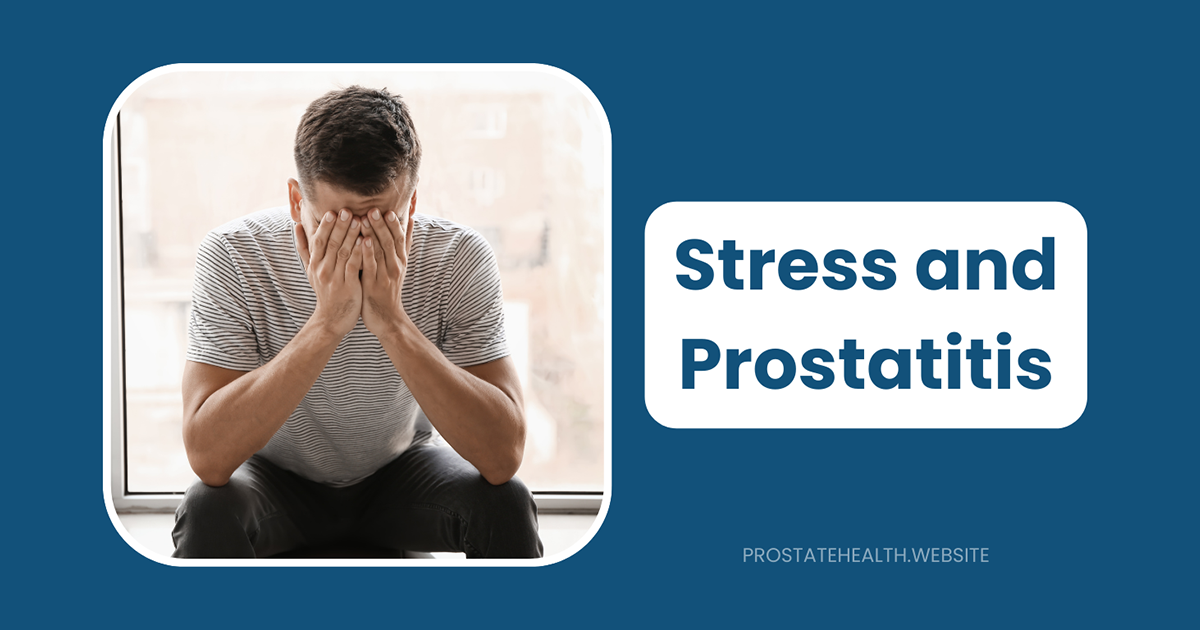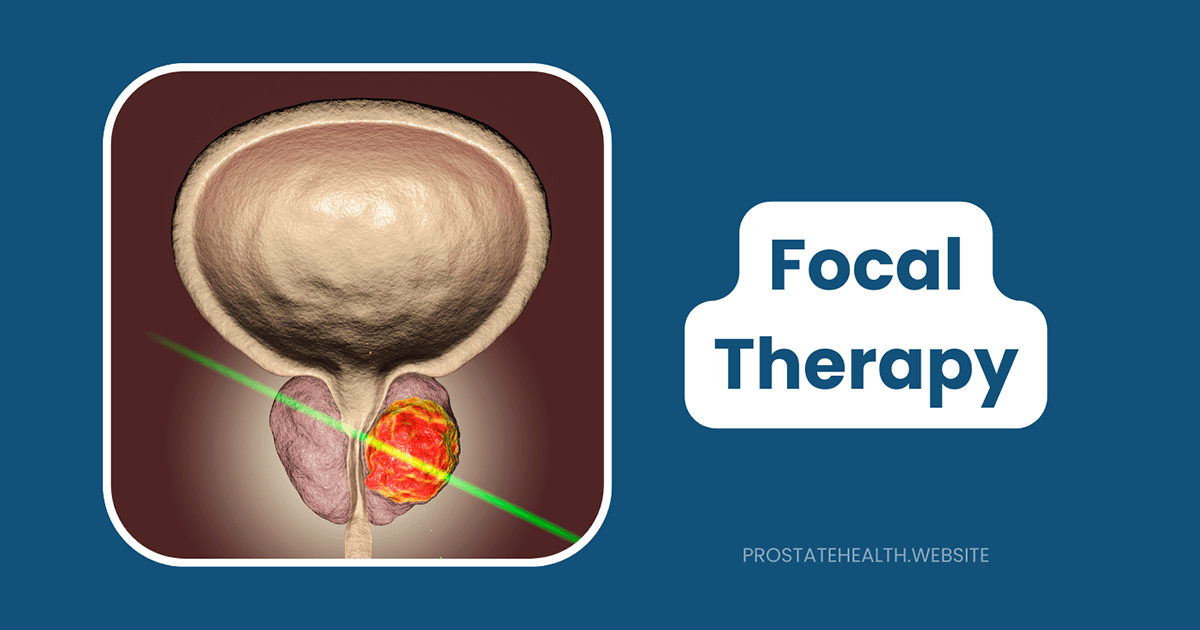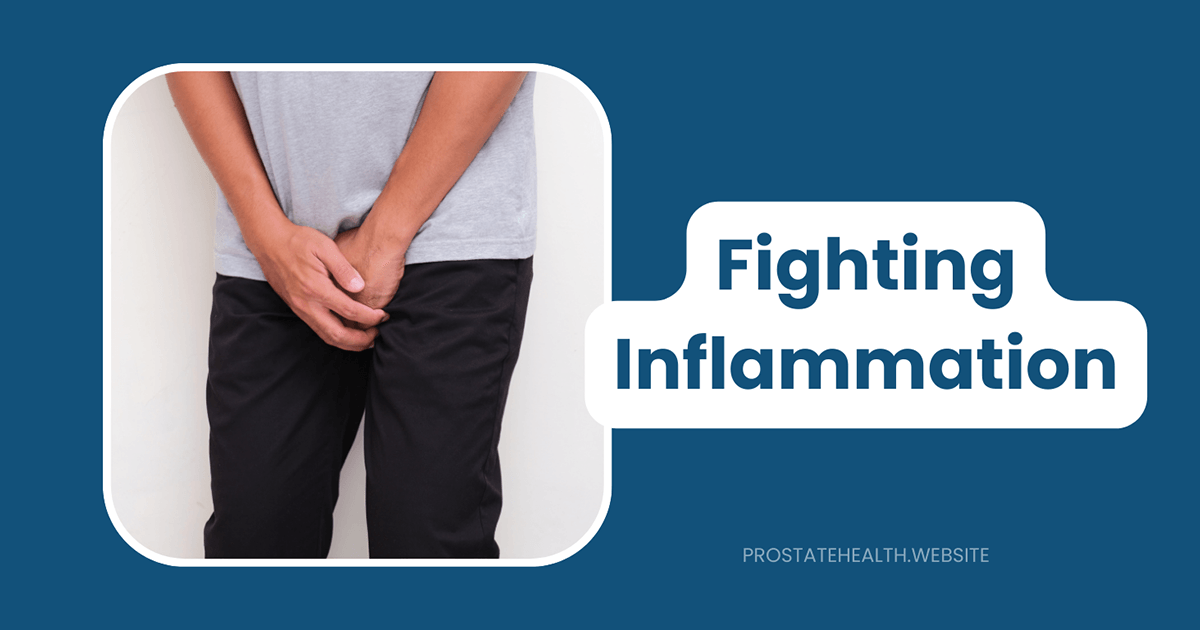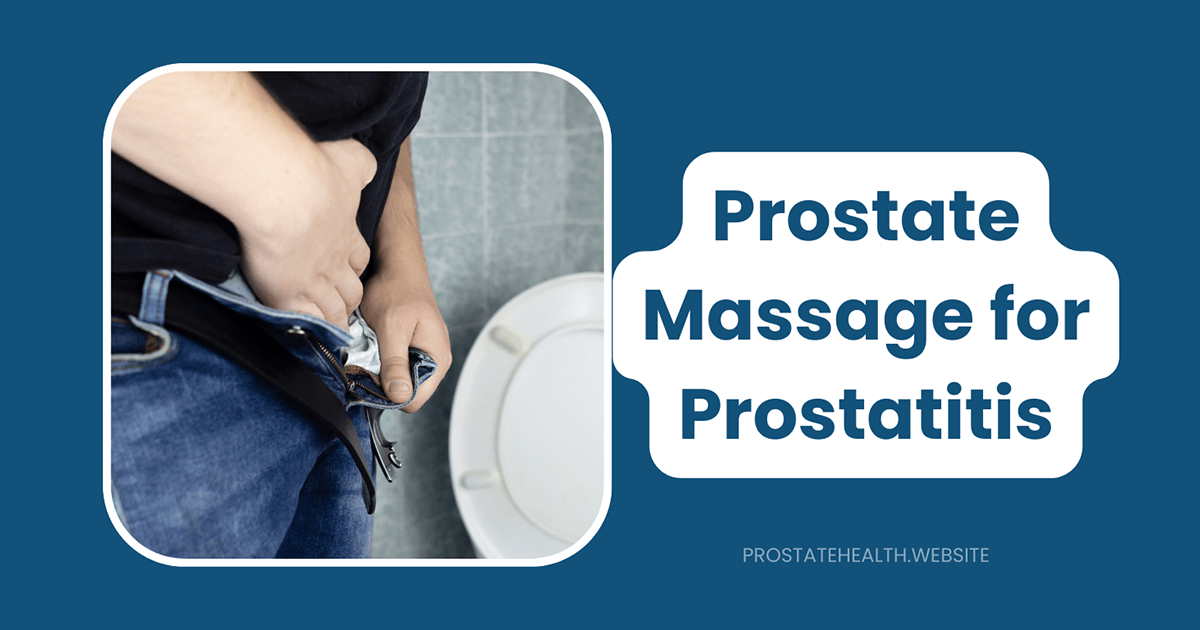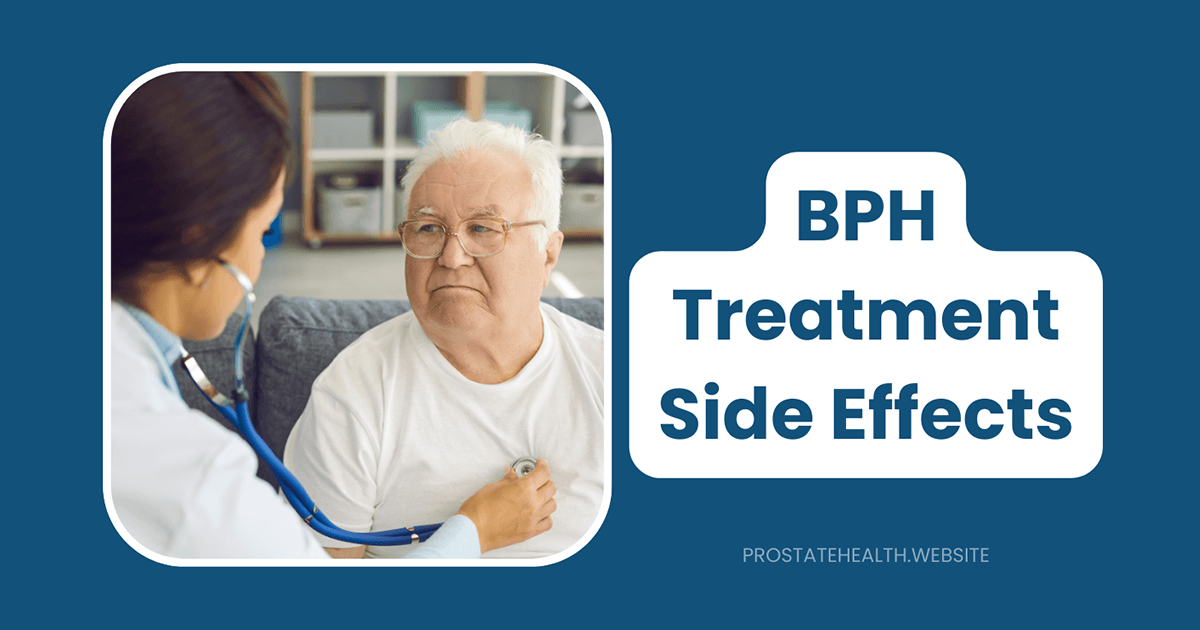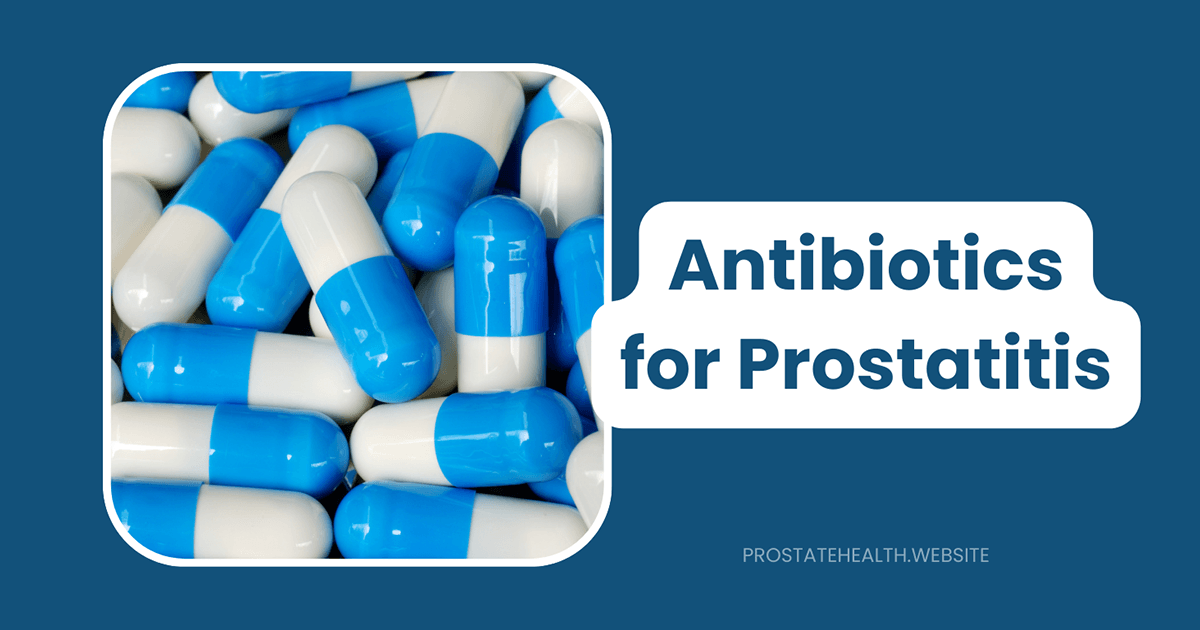When Prostatitis Won’t Resolve: Advanced Treatment Options

Living with persistent prostatitis can feel like fighting an endless battle. The pain, urinary symptoms, and impact on quality of life can be devastating, especially when standard treatments fail to provide relief. As someone who has spent years advocating for men’s prostate health, I understand the frustration and hopelessness that can set in when conventional approaches don’t work.
If you’re among the millions of men dealing with treatment-resistant prostatitis, know that you’re not alone—and importantly, you’re not out of options. Medical science continues to advance, offering new approaches for even the most stubborn cases of prostatitis.
In this comprehensive guide, we’ll explore advanced treatment options for persistent prostatitis, focusing on evidence-based approaches that may provide relief when standard therapies have failed.
Understanding Treatment-Resistant Prostatitis
Before diving into advanced treatment options, it’s important to understand what we mean by “treatment-resistant” prostatitis.
Prostatitis affects approximately 5% of men aged 20-50, accounting for about 2 million outpatient consultations annually in the United States. While some cases respond well to initial treatments, others persist despite multiple therapeutic attempts.
Treatment resistance can occur in any of the four types of prostatitis defined by the National Institutes of Health (NIH):
- Acute bacterial prostatitis (Category I): Usually responds well to antibiotics but may occasionally develop resistance
- Chronic bacterial prostatitis (Category II): More likely to be treatment-resistant due to biofilm formation and difficult-to-reach infections
- Chronic prostatitis/chronic pelvic pain syndrome (CP/CPPS, Category III): The most common form (90% of cases) and often the most challenging to treat
- Asymptomatic inflammatory prostatitis (Category IV): Typically doesn’t require treatment
CP/CPPS is further divided into inflammatory (IIIa) and non-inflammatory (IIIb) subtypes, each potentially requiring different treatment approaches.
Why Standard Treatments May Fail
Several factors can contribute to treatment resistance:
- Biofilm formation: Bacteria can form protective shields that antibiotics struggle to penetrate
- Misdiagnosis: The underlying cause may be incorrectly identified
- Multifactorial causes: Prostatitis, especially CP/CPPS, often involves multiple contributing factors
- Pelvic floor dysfunction: Muscle tension may persist despite addressing other factors
- Neurological sensitization: The nervous system may remain hypersensitive even after the initial trigger is addressed
- Psychological factors: Stress, anxiety, and depression can perpetuate symptoms
Understanding these factors helps explain why a multimodal approach is often necessary for treatment-resistant cases.
Advanced Pharmacological Approaches
When first-line medications fail, several advanced pharmacological options may be considered:
Combination Antibiotic Therapy
For bacterial prostatitis that doesn’t respond to standard antibiotic regimens, combination therapy may be more effective.
The approach: Using two or more antibiotics simultaneously to target different aspects of bacterial metabolism or overcome resistance mechanisms.
Research insight: A study published in the Journal of Urology found that combining a fluoroquinolone with azithromycin resulted in higher cure rates for chronic bacterial prostatitis compared to fluoroquinolone monotherapy.
Considerations: This approach requires careful monitoring for side effects and drug interactions. Culture-directed therapy based on expressed prostatic secretions is ideal when possible.
Long-Term Low-Dose Antibiotics
For recurrent bacterial prostatitis, long-term suppressive therapy may be an option.
The approach: Using low-dose antibiotics for extended periods (6-12 months or longer) to prevent recurrence.
Research insight: This approach has shown efficacy in preventing recurrent urinary tract infections and may help manage chronic bacterial prostatitis when eradication isn’t possible.
Considerations: Concerns about antibiotic resistance and side effects must be weighed against benefits. Regular monitoring is essential.
Novel Alpha-Blockers
While standard alpha-blockers like tamsulosin are common first-line treatments, newer agents may offer benefits for resistant cases.
The approach: Silodosin and alfuzosin have slightly different receptor selectivity profiles that may benefit some patients who didn’t respond to other alpha-blockers.
Research insight: A comparative study found that silodosin provided superior symptom relief compared to tamsulosin in some men with CP/CPPS, particularly for urinary symptoms.
Considerations: Side effects vary between agents, with silodosin having higher rates of ejaculatory dysfunction but potentially better urinary symptom control.
Neuromodulatory Medications
For cases with a significant neuropathic pain component, medications that target nerve signaling may help.
The approach: Using medications originally developed for neuropathic pain or depression to modulate pain signals.
Options include:
- Gabapentinoids (gabapentin, pregabalin): Reduce hyperexcitability of nerves
- Tricyclic antidepressants (amitriptyline, nortriptyline): Modulate pain perception
- SNRI antidepressants (duloxetine): Affect both pain signaling and mood
Research insight: A systematic review found that these agents can provide significant relief for some patients with CP/CPPS, particularly those with predominant pain symptoms.
Considerations: These medications often require gradual dose titration and may cause side effects like drowsiness, dizziness, or dry mouth.
Minimally Invasive Procedures
When medications fail to provide adequate relief, several minimally invasive procedures may be considered:
Extracorporeal Shockwave Therapy (ESWT)
This emerging treatment uses acoustic waves to address pain and inflammation.
The approach: Low-intensity shock waves are directed at the perineum and prostate region, typically once weekly for 4-8 weeks.
Research insight: A prospective, randomized, double-blind, placebo-controlled study published in December 2024 evaluated the safety and efficacy of extracorporeal shockwave therapy for chronic prostatitis/chronic pelvic pain syndrome with promising results. Another study found that ESWT led to a 31.3% to 53.6% decrease in NIH-CPSI scores over 12 months, with improvements in pain, urinary symptoms, and quality of life.
How it works: ESWT is believed to:
- Reduce muscle tension
- Improve blood flow to the prostate
- Disrupt pain signal transmission
- Stimulate tissue healing
- Reduce inflammation
Considerations: While generally well-tolerated with minimal side effects, ESWT is still considered experimental by some insurance providers and may not be covered.
Intraprostatic Injections
Direct injection of medications into the prostate can deliver higher concentrations to the target area while minimizing systemic side effects.
The approach: Using transrectal ultrasound guidance, medications are injected directly into the prostate.
Options include:
- Corticosteroids: Reduce inflammation
- Botulinum toxin (Botox): Relaxes muscles and may reduce pain
- Local anesthetics: Provide temporary pain relief and may break the pain cycle
Research insight: A prospective cohort clinical study assessed the safety and efficacy of intraprostatic injection of betamethasone for refractory chronic nonbacterial prostatitis. The study found a success rate of 71% after 1 week, 55.6% after 4 weeks, and 44.4% after 12 weeks based on total NIH-CPSI scores.
Considerations: These procedures typically require specialized training and equipment. Side effects may include temporary worsening of symptoms, infection risk, or bleeding.
Transurethral Microwave Thermotherapy (TUMT)
This procedure uses microwave energy to heat and partially destroy prostate tissue.
The approach: A specialized catheter delivers microwave energy to the prostate while cooling systems protect the urethra.
Research insight: Some studies have shown improvement in both urinary symptoms and pain in selected patients with CP/CPPS, though results are mixed.
Considerations: Side effects may include temporary worsening of symptoms, urinary retention, or ejaculatory changes. Not all patients are good candidates for this procedure.
Transurethral Needle Ablation (TUNA)
Similar to TUMT, this procedure uses radiofrequency energy instead of microwaves.
The approach: Needles are inserted into the prostate through the urethra, and radiofrequency energy creates precise areas of coagulation necrosis.
Research insight: Limited studies suggest potential benefit for selected patients with CP/CPPS, particularly those with significant urinary symptoms.
Considerations: As with TUMT, careful patient selection is important, and the procedure may not be suitable for all types of prostatitis.
Advanced Physical and Neuromodulatory Approaches
Beyond medications and procedures, several specialized physical and neuromodulatory approaches show promise:
Specialized Pelvic Floor Physical Therapy
While basic pelvic floor therapy is often tried early in treatment, advanced techniques may help resistant cases.
Advanced approaches include:
- Trigger point release: Targeting specific painful points in the pelvic muscles
- Myofascial release: Addressing tension in the connective tissue
- Internal techniques: Direct treatment of internal pelvic floor muscles
- Dry needling: Using thin needles to release muscle knots
Research insight: A randomized controlled trial protocol published in April 2025 is investigating the long-term effects of pelvic floor training on male chronic pelvic pain, with preliminary results showing promise for resistant cases.
Considerations: Finding a physical therapist with specialized training in male pelvic pain is crucial. Treatment may initially increase discomfort before improvement occurs.
Pudendal Nerve Blocks
For cases with significant neuropathic pain, especially when the pudendal nerve is involved, nerve blocks may provide relief.
The approach: Guided by imaging, a local anesthetic (sometimes combined with a steroid) is injected near the pudendal nerve.
Research insight: Case series have shown significant short-term relief in selected patients, with some experiencing longer-term benefits after repeated procedures.
Considerations: Effects are often temporary, though repeated blocks may provide cumulative benefit. The procedure requires specialized expertise.
Neuromodulation Techniques
These approaches aim to alter nerve signaling patterns to reduce pain and improve function.
Options include:
- Transcutaneous Electrical Nerve Stimulation (TENS): Using mild electrical currents applied to the skin
- Percutaneous Tibial Nerve Stimulation (PTNS): Targeting the tibial nerve to modulate pelvic nerve function
- Sacral Neuromodulation: Implanting a device that stimulates sacral nerves
Research insight: While research specifically for prostatitis is limited, these approaches have shown benefit in related conditions like interstitial cystitis and chronic pelvic pain.
Considerations: TENS is non-invasive and can be used at home, while PTNS requires office visits. Sacral neuromodulation is more invasive but may provide longer-term relief for selected patients.
Integrative and Complementary Approaches
For treatment-resistant prostatitis, integrating conventional medicine with evidence-based complementary approaches may provide additional benefit:
Acupuncture
This traditional Chinese medicine technique involves inserting thin needles at specific points on the body.
Research insight: Several controlled trials have shown acupuncture may reduce pain and improve quality of life in men with CP/CPPS. A meta-analysis found acupuncture provided significant symptom improvement compared to sham procedures.
Considerations: Results vary widely between practitioners. Look for licensed acupuncturists with experience treating pelvic pain conditions.
Herbal and Nutritional Supplements
Several natural compounds have shown promise in research studies:
- Quercetin: A plant flavonoid with anti-inflammatory properties
- Bee pollen extract (cernilton): May reduce prostate inflammation
- Saw palmetto: Potentially beneficial for some urinary symptoms
- Curcumin: The active component in turmeric with anti-inflammatory effects
- Omega-3 fatty acids: May help reduce systemic inflammation
Research insight: A systematic review found that quercetin and bee pollen extract showed the strongest evidence among supplements for CP/CPPS symptom improvement.
Considerations: Quality and dosage vary widely between products. Discuss with your healthcare provider before starting supplements, as they may interact with medications.
Mind-Body Approaches
The connection between psychological factors and prostatitis symptoms is well-established.
Effective approaches include:
- Cognitive Behavioral Therapy (CBT): Addresses thought patterns that may amplify pain perception
- Mindfulness-Based Stress Reduction: Teaches present-moment awareness without judgment
- Biofeedback: Provides real-time feedback on physiological processes to improve control
Research insight: Studies show these approaches can significantly reduce pain and improve quality of life in chronic pain conditions, including prostatitis.
Considerations: These techniques require practice and commitment but have minimal side effects and may provide benefits beyond prostatitis symptom management.
Surgical Interventions: A Last Resort
When all other approaches fail, surgical options may be considered, though they’re rarely recommended due to limited evidence and potential risks:
Transurethral Resection of the Prostate (TURP)
This procedure, commonly used for benign prostatic hyperplasia, removes prostate tissue through the urethra.
Research insight: Limited case series suggest some men with severe, treatment-resistant prostatitis may benefit, particularly those with significant urinary obstruction.
Considerations: Significant risks include retrograde ejaculation, erectile dysfunction, incontinence, and no guarantee of pain relief. Generally considered only after exhausting other options.
Radical Prostatectomy
Complete removal of the prostate is rarely considered for prostatitis alone.
Research insight: Case reports suggest some men with debilitating, treatment-resistant prostatitis have experienced relief after prostatectomy, but evidence is anecdotal.
Considerations: This major surgery carries significant risks and is typically considered only in extreme cases when quality of life is severely impacted and all other options have failed.
Creating a Personalized Advanced Treatment Plan
Given the complexity of treatment-resistant prostatitis, a personalized, multimodal approach is essential:
1. Comprehensive Reassessment
Before pursuing advanced treatments, a thorough reevaluation is crucial:
- Confirm the diagnosis: Ensure the symptoms are indeed due to prostatitis and not another condition
- Identify contributing factors: Look for previously missed issues like pelvic floor dysfunction or psychological factors
- Review previous treatments: Determine what has been tried, at what doses, and for how long
2. Phenotyping Your Prostatitis
Research suggests that identifying your specific “phenotype” or symptom pattern can guide treatment:
- Urinary phenotype: Predominant urinary symptoms may respond better to alpha-blockers or urinary-focused treatments
- Psychosocial phenotype: Significant stress or anxiety component may benefit from psychological approaches
- Organ-specific phenotype: Prostate-focused inflammation may respond to anti-inflammatories or prostate-specific treatments
- Infection phenotype: Evidence of infection may require specialized antibiotic approaches
- Neurological/systemic phenotype: Widespread pain or sensitivity may benefit from neuromodulatory approaches
- Muscle tension phenotype: Pelvic floor dysfunction may require specialized physical therapy
3. Sequential or Combination Approach
Based on your phenotype, your healthcare provider may recommend:
- Sequential trials: Methodically trying one approach at a time
- Combination therapy: Using multiple complementary approaches simultaneously
- Stepped care: Starting with less invasive options before progressing to more advanced treatments
Finding the Right Healthcare Team
Successfully managing treatment-resistant prostatitis often requires a multidisciplinary approach:
Specialists to Consider
- Urologist: Preferably one with special interest in prostatitis and pelvic pain
- Pain specialist: For advanced pain management approaches
- Pelvic floor physical therapist: With specific training in male pelvic pain
- Psychologist or psychiatrist: Specializing in chronic pain management
- Integrative medicine physician: To help coordinate conventional and complementary approaches
Questions to Ask Potential Providers
- How many patients with treatment-resistant prostatitis have you treated?
- What advanced treatment options do you offer or have experience with?
- Do you work with a multidisciplinary team for complex cases?
- What is your approach to phenotyping prostatitis?
- Are you open to integrating complementary approaches with conventional treatments?
Real-World Success: Case Studies
While every man’s experience with prostatitis is unique, these anonymized case studies illustrate successful approaches to treatment-resistant cases:
Case 1: Michael, 42
History: Three years of CP/CPPS with predominant pain, failed multiple antibiotics and alpha-blockers.
Successful approach: Combination of specialized pelvic floor physical therapy, low-dose amitriptyline, and mindfulness-based stress reduction. After six months, pain reduced by 70%.
Key insight: Addressing muscle tension and central sensitization simultaneously provided synergistic benefits.
Case 2: Robert, 56
History: Recurrent bacterial prostatitis for five years with incomplete response to multiple antibiotic courses.
Successful approach: Culture-specific long-term low-dose antibiotics combined with biofilm disruptors and regular prostate massage. Supplemented with quercetin and saw palmetto.
Key insight: Targeting the bacterial biofilm while supporting prostate health from multiple angles led to sustained improvement.
Case 3: James, 38
History: Seven years of treatment-resistant CP/CPPS with severe impact on quality of life, failed all standard approaches.
Successful approach: Series of six extracorporeal shockwave therapy treatments combined with pudendal nerve blocks and cognitive behavioral therapy.
Key insight: Breaking the pain cycle with procedural interventions while addressing pain catastrophizing led to progressive improvement.
The Future of Prostatitis Treatment
Research continues to advance our understanding and treatment of persistent prostatitis:
Emerging Approaches
- Xialiqi capsules: A March 2025 study explored the effects of this treatment on prostate epithelial cell pyroptosis via the NLRP3/Caspase-1 pathway
- Microbiome modulation: Targeting the prostatic microbiome with specialized probiotics
- Stem cell therapy: Early research on using mesenchymal stem cells to modulate inflammation
- Advanced imaging techniques: Better identifying structural and functional abnormalities
- Genetic testing: Personalizing treatment based on genetic factors affecting inflammation and pain processing
Ongoing Clinical Trials
Several promising studies are currently recruiting participants:
- Comparative trials of different shockwave therapy protocols
- Novel neuromodulation approaches
- Combination therapy regimens
- Targeted intraprostatic injections
The Bottom Line: Don’t Lose Hope
If you’re struggling with persistent prostatitis that hasn’t responded to standard treatments, remember:
- You’re not alone: Millions of men face similar challenges
- Treatment options continue to evolve: New approaches emerge regularly
- Personalized, multimodal care is key: The right combination of treatments for your specific situation can make a significant difference
- Persistence pays off: Finding effective management often requires patience and persistence
While complete cure isn’t always possible for chronic prostatitis, substantial improvement in symptoms and quality of life is achievable for most men with the right approach.
Have you tried advanced treatments for persistent prostatitis? Share your experience in the comments below to help others on their healing journey.

